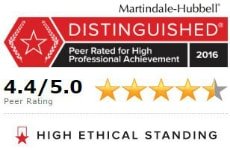1. What is ethanol?
Ethanol is one of many alcohols; it is the type of alcohol that is contained in alcoholic beverages as opposed to isopropanol (rubbing alcohol). Ethanol is a water soluble and highly volatile molecule. At the risk of getting too technical the molecular structure is as follows:
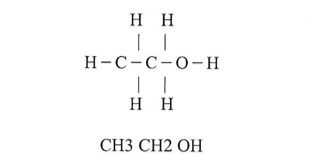
Ethanol is customarily ingested orally and eventually distributes throughout the blood system and permeates or partitions into the deep lung air. The deep lung air is the target for breath testing devices, such as the Intoxilyzer 5000-68 EN (Intoxilyzer), to estimate a subject’s breath alcohol concentration (BrAC) or to indirectly estimate the subject’s blood alcohol concentration (BAC). The purpose of this article is to educate the reader regarding how certain other “interfering chemicals” can cause a false-high reading on the Intoxilyzer.
II. The Intoxilyzer
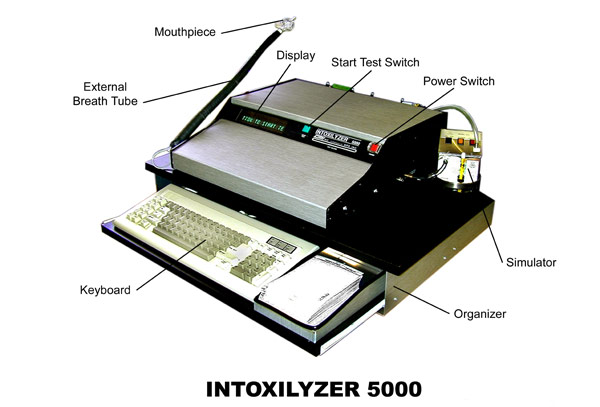
One of the foremost axioms of analytical chemistry is as follows
ACCURACY + PRECISION + SPECIFICITY = RELIABILITY.
This truism applies to virtually all quantitative and qualitative measurements. As a matter of fact, the Intoxilyzer is not “specific” for ethanol. Nonetheless, the Intoxilyzer is by far the most commonly used device by law enforcement for estimating a subject’s BrAC and/or BAC in the prosecution of Operating Under the Influence (OUI) cases in the State of Maine. The Intoxilyzer, by design, measures the concentration of only a portion of the ethanol molecule that presents in a given breath sample. That portion of the ethanol molecule is referred to as the “methyl group” and is seen on the diagram below in bold letters to the far left as follows.
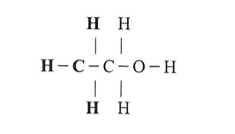
The methyl group (CH3) is common to countless other molecules besides ethanol. As a practical matter most of these molecules are not found on human breath. However, a number of them are. In this article, I will refer to these latter molecules as “interfering chemicals”.
III. How do interfering chemicals present on a breath sample?
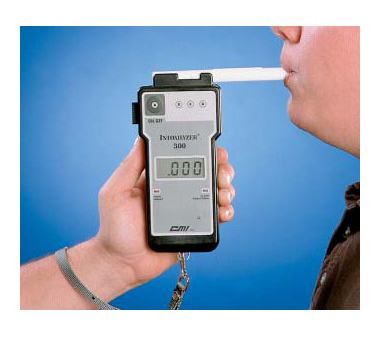 Interfering chemicals present on certain breath samples through a number of different means. Some interfering chemicals are introduced into the human body through the skin. These chemicals eventually are distributed throughout the blood system, and like ethanol, end up in the deep lung air. Some of those same chemicals, as well as others, are introduced into the human body through inhalation and are also distributed throughout the blood and eventually make their way into the deep lung air. Still other interfering chemicals come from within the body itself. This is usually the result of one or more various pathologies which cause the body to produce interfering chemicals that are eventually breathed out by the subject.
Interfering chemicals present on certain breath samples through a number of different means. Some interfering chemicals are introduced into the human body through the skin. These chemicals eventually are distributed throughout the blood system, and like ethanol, end up in the deep lung air. Some of those same chemicals, as well as others, are introduced into the human body through inhalation and are also distributed throughout the blood and eventually make their way into the deep lung air. Still other interfering chemicals come from within the body itself. This is usually the result of one or more various pathologies which cause the body to produce interfering chemicals that are eventually breathed out by the subject.
The common thread is that, no matter what the source is of interfering chemicals in any given subject, that person’s breath analysis by the Intoxilyzer is highly likely to result in a false-high. Without the aid of an experienced Maine OUI defense attorney, that person runs a very high risk of being falsely convicted of OUI.
IV. Examples of interfering chemical cases.
 Over the years I have obtained a number of not guilty verdicts utilizing the “interfering chemicals” defense. However, in most cases in which I believed that interfering chemicals were present the defense has not been viable. One reason is that some clients consumed enough alcohol to put them well over the legal limit in any event (just not as high as the Intoxilyzer may have indicated). In almost all cases, the interfering chemical defense requires my client to testify to establish the presence of interfering chemicals (a person’s medical condition, a person’s occupational or avocational exposure to interfering chemicals, etc.). Accordingly, the client’s testimony must also include a truthful account of how much ethanol or alcoholic beverage that person consumed prior to the administration of the Intoxilyzer test. People who are accused of OUI must choose a Maine OUI defense attorney with the experience and knowledge to explore these defenses at the first attorney-client meeting.
Over the years I have obtained a number of not guilty verdicts utilizing the “interfering chemicals” defense. However, in most cases in which I believed that interfering chemicals were present the defense has not been viable. One reason is that some clients consumed enough alcohol to put them well over the legal limit in any event (just not as high as the Intoxilyzer may have indicated). In almost all cases, the interfering chemical defense requires my client to testify to establish the presence of interfering chemicals (a person’s medical condition, a person’s occupational or avocational exposure to interfering chemicals, etc.). Accordingly, the client’s testimony must also include a truthful account of how much ethanol or alcoholic beverage that person consumed prior to the administration of the Intoxilyzer test. People who are accused of OUI must choose a Maine OUI defense attorney with the experience and knowledge to explore these defenses at the first attorney-client meeting.
Not Guilt Verdicts
The not guilty verdicts were based on a variety of circumstances. Some were based on exposure to chemicals through inhalation. Those cases include a blacksmith who was building an entertainment center as an anniversary gift for his wife. He was working on this project in a poorly ventilated barn during the wintertime which was heated with Salamander heating devices which emitted a heavy dose of hydrocarbons into the air that he was breathing for hours. Another involved a long haul trucker who was working with a number of hydrocarbon-laden chemicals to strip some offending material from his rig as well as other interfering chemicals contained in the paint products he was using during the course of that same project. In his case, the interfering chemicals eventually presented in his deep lung air as a result of absorption through inhalation and skin exposure. In both of the aforementioned cases products such as toluene and xylene were among the offending interfering chemicals that we cited during the course of the jury trial.
Guilty Verdict
In addition to those examples, I obtained a not guilty verdict after a jury trial for a client whose Intoxilyzer result was a 0.19. In his case, diabetes was the culprit. While diabetes alone does not cause a false-high reading on the Intoxilyzer, diabetics are prone to certain medical conditions (extreme hyperglycemia in this case) that will produce such a result. That case required an extensive review of my client’s medical records as well as a careful analysis of the videotape evidence of him on the night of his arrest and the results of his glucometer analysis shortly after the administration of the Intoxilyzer test.
These are difficult cases to investigate, prepare for and present to a jury. In addition to the knowledge and skills of the defense attorney, they require effective expert testimony. The defense attorney and the expert must have extensive knowledge in the fields of forensic chemistry, toxicology and pathology.
V. Conclusion
The presence of or the potential presence of interfering chemicals is by no means a “slam dunk” defense to an Intoxilyzer test. Like many other defenses in the field of Maine OUI defense it requires a high level of skill, knowledge and experience on the part of the defense attorney to present a viable case and to recognize when the factual circumstances provide for such a defense.
OUI Case Results From Interfering Chemicals
Masonry Chemicals Interference Case
Breath Test Lack of Specificity Case
Disclaimer: This article is intended to provide general, not specific, information about Maine law. The publication of this article does not constitute an attorney-client relationship between the author(s) and the reader(s).


